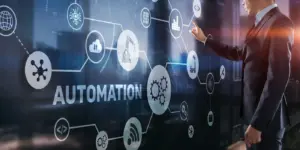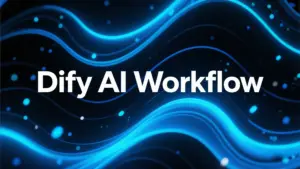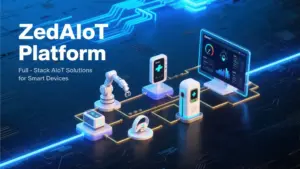In the fast-evolving landscape of AIoT and automation, the ability to combine n8n workflows with a visual, interactive frontend is a game-changer. That’s where AG-UI steps in. Acting as a protocol-driven UI layer, AG-UI lets developers build intelligent, real-time interfaces while leveraging low-code automation engines like n8n for powerful backend orchestration.
This blog explores how AG-UI and n8n work together to deliver end-to-end visual automation—from user event triggers to real-time data dashboards. You’ll learn how to build smarter, more scalable workflows with a seamless frontend-backend integration model.
Why n8n Needs a Workflow UI Layer like AG-UI:
- Zero-code rapid build: The frontend calls exposed n8n APIs; business logic is visualized in n8n
- Decoupled models and tasks: AG-UI handles UI/input, n8n manages backend execution and integrations
- Cross-platform versatility: Desktop, web, mobile—all can use AG-UI to interface with n8n
What Is AG-UI? The AI Frontend Protocol for n8n Workflows
AG-UI (Agent Graphical User Interface) is a frontend protocol for AI applications. Its main goal is to provide a unified UI rendering and event system for interaction across different models and agents.
Key Features:
- Protocol-driven UI components: Chat bubbles, multimodal inputs, Markdown areas, forms, buttons—all defined and rendered via protocol
- Event-driven Interaction Model: Supports onClick, onSubmit, onChange—each event transmits real-time input to backend (e.g., n8n API endpoint)
- Mapping UI Elements to n8n Workflow Nodes: Each UI component can be mapped to a workflow node—ideal for debugging and traceability
In n8n integration, AG-UI remains frontend-only, unconcerned with backend logic, APIs, or hardware—it handles inputs and displays results. n8n orchestrates the actual business flows.
Further Reading about AG-UI: What Is the AG-UI Protocol? A Developer’s Guide to Frontend AI Integration
How n8n Powers Backend Logic in Low-Code Platforms
n8n is a node-based visual workflow orchestrator ideal for backend execution in AG-UI integrations.
Advantages:
- AI API support: Connect OpenAI, DeepSeek, Anthropic, etc.
- 300+ built-in connectors: Databases, HTTP, MQTT, Slack, Google Sheets, AWS, and more
- Extensible: Build custom nodes for private logic, ML models, or device control
- Flexible triggers: Webhooks, cron jobs, MQTT, file watchers, DB events
Common AG-UI + n8n Patterns:
- Webhook trigger: AG-UI sends event data via HTTP POST to a webhook node in n8n
- WebSocket/real-time API: Bi-directional live communication with instant results
- MQTT: For IoT use cases, AG-UI sends MQTT messages, n8n subscribes and executes
Event-Driven Plugins: AG-UI’s Secret to Workflow Automation
AG-UI’s strength lies in its plugin architecture and event-driven model.
- Plugins: Developers can add custom components like AI image panels, voice input, maps, etc., all protocol-compliant
- Events: Every click/input/submit can trigger backend logic, like data analysis or IoT control
When paired with n8n:
- AG-UI captures the event and sends it to an n8n webhook
- n8n parses data and routes it to the correct workflow branch
- Business logic executes (AI call, IoT command, DB task)
- Results are pushed back to AG-UI and rendered visually
Architecture Diagram: AG-UI + n8n Integration Flow
flowchart TB subgraph FE["\U0001F3A8 Frontend"] UI[AG-UI Interface] Evt[Event Listener] UI --> Evt end subgraph BE["\U0001F6E0️ Backend"] WH[Webhook/API Endpoint] N8N[n8n Workflow Engine] RES[Processed Results] Evt --> WH --> N8N N8N --> RES end subgraph EXT["\U0001F310 External Systems"] AIAPI["LLM APIs\n(OpenAI, DeepSeek)"] DEV["IoT Devices / MQTT"] DB["Database / Business System"] N8N -->|AI Call| AIAPI N8N -->|IoT Control| DEV N8N -->|Logic| DB end RES --> UI
Real-World Example: Retail Automation with AG-UI & n8n
Background
A retail chain with 500+ stores needed automated daily inspection of POS status, digital signage, and temperature/humidity sensors. Manual checks were inefficient and error-prone.
Solution: AG-UI + n8n
- AG-UI Frontend:
- Store managers click "Start Inspection"
- Progress updates show POS status, signage snapshots, sensor readings
- n8n Backend:
- Event triggers parallel workflows:
- POS status check (via API)
- Digital signage validation (camera + AI image analysis)
- Sensor data via MQTT
- Threshold comparisons generate a PDF report
- Event triggers parallel workflows:
- Return to AG-UI:
- Report link and error highlights are sent back
- Displayed visually with downloadable report
Demo Architecture Diagram
flowchart LR subgraph Client["\U0001F310 Frontend (AG-UI Renderer Demo)"] direction TB UI1["Buttons (Sales Report / Inspection / Reboot)"] UI2["Custom JSON Input"] UI3["AG-UI JSON Rendering"] end subgraph Backend["\U0001F6E0️ Backend Logic"] direction TB Mock["Mock Server (Sample Data)"] N8N["n8n Webhook Node"] WF1["n8n Workflow: Fetch Business Data"] WF2["n8n Workflow: Format AG-UI JSON"] end subgraph System["\U0001F3ED IoT / Business Systems"] direction TB IOT["IoT Device Platform"] ERP["ERP / CRM / Database"] end UI1 --> Mock UI1 --> N8N UI2 --> N8N N8N --> WF1 WF1 --> IOT WF1 --> ERP WF1 --> WF2 WF2 --> UI3 Mock --> UI3
Multi-Agent Orchestration: LangGraph & AG-UI via n8n
Though n8n supports direct API calls, multi-agent orchestration (LangGraph, AutoGen, LangChain) helps with complex reasoning, task decomposition, and long context dialogues.
AG-UI = interaction layer
n8n = orchestrator calling LangGraph/AutoGen/LLMs
Flow:
- User inputs task (e.g., "create store promo plan and poster")
- n8n routes to LangGraph:
- Planning agent: generates strategy
- Design agent: uses AI image gen
- QA agent: reviews consistency
- Outputs combined
- AG-UI renders full package: text + images + downloads
Real-World Scenarios
| Use Case | AG-UI Role | n8n Role | Value |
|---|---|---|---|
| Smart Retail | Visual Ops Dashboard | IoT status, inventory, marketing workflows | -30% ops cost |
| Industrial Monitoring | Live Production UI | IoT analytics, anomaly detection | 3-hour fault prediction |
| Enterprise Customer Service | Unified Chat UI | Multi-LLM Q&A, ticket routing | -60% response time |
| Content Automation | Visual Editor | Multi-model creation, auto publishing | 5x content throughput |
Summary & Code Resources: Start Building with AG-UI + n8n
AG-UI + n8n is the ideal "visual frontend + automation backend" AI solution.
- AG-UI: interaction layer with plugin system
- n8n: automation orchestrator for AI, IoT, and data
- Plugin + webhook + multi-agent support = full-stack automation
Integrating AG-UI and n8n empowers teams to develop highly visual, scalable, and automated workflows without heavy frontend or backend development. From AI dashboards to IoT orchestration, this architecture unlocks rapid deployment of interactive, intelligent systems.
Ready to build your own? Start with our AG-UI Quick Start and explore ZedIoT's AIoT workflow solutions.

Recommended Links:
Retail Store AI Management Platform
Industrial AI Visualization Platform
n8n vs Dify
Frequently Asked Questions
What is AG-UI in workflow automation?
AG-UI is a protocol-based frontend framework that enables AI-driven visual interfaces. It connects seamlessly with backend platforms like n8n for workflow orchestration.
How does AG-UI integrate with n8n?
AG-UI sends event triggers (via Webhook, WebSocket, or MQTT) to n8n, which executes backend workflows. The results are sent back to AG-UI for real-time visualization.
Is AG-UI a low-code solution?
Yes, AG-UI supports low-code development. It allows building intelligent UIs without heavy frontend code, using JSON-based component definitions and event handlers.
What use cases fit AG-UI + n8n?
Smart retail, IoT dashboards, AI content generation, and automation-heavy UIs benefit from this pairing. It’s ideal for data-rich, interactive systems.
Can I integrate AI models using AG-UI + n8n?
Absolutely. AG-UI handles the interface, while n8n connects to LLM APIs (e.g., OpenAI, DeepSeek) and orchestrates the logic behind multi-agent workflows.


